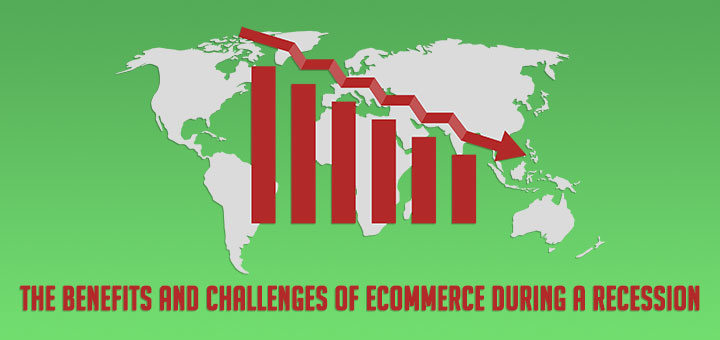WooCommerce Themes and Platform vs. Shopify Software: What Works Better for Your Needs?
Utilizing an eCommerce platform that allows you to maximize your profits is an essential component of launching any online store. There are several solutions available, each with its own set of capabilities and perks. As a result, deciding which one is best for you might be confusing. You are probably thinking of one of the world’s two top platforms. These are Shopify or WooCommerce. As per BuiltWith, WooCommerce has a 26% share, compared to 20% for Shopify. As a result, it turns out to be the market’s most popular store builder. So, what will be your perfect match? WooCommerce themes and other benefits of the platform or Shopify software with all its benefits? We will assist you in understanding the fundamental distinctions between them. As a result, you will be ready to make a competent choice that guarantees a decent future for every online store.
WooCommerce or Shopify: What Stands Behind Them?
WooCommerce was developed by WooThemes in 2011. Generally speaking, it is a WordPress open-source plugin. It helps people transform their existing WordPress site into a comprehensive online store. The platform has the potential to be an excellent choice for businesses of all kinds. It means that companies from small-scale shops to large multinationals can work with WooCommece. Bloggers can also take the next step in converting their blogs into an eCommerce business. Finally, it will be suitable for budget-conscious consumers.

A German who had been living in Canada started to offer snowboards online in 2006. He developed his own eCommerce solution and suddenly discovered that others may benefit from it as well. In a few years, Shopify turned out to be one of the most popular tools for various businesses. These days, it is a fully featured platform that operates in the cloud. It meets all the needs in terms of creating, growing, and managing an online business at the same location.

Key Differences to Keep in Mind
- WooCommerce is a WordPress open-source eCommerce plugin. Shopify is a cloud-based eCommerce platform.
- WooCommerce is free to download, making it an excellent solution for low-cost enterprises. On the contrary, Shopify is an all-in-one eCommerce platform that offers paid services. There are several packages tailored to your company model.
WooCommerce or Shopify: Distinctive Characteristics
WooCommerce is a plugin designed for usage on WordPress-powered websites. It features a massive number of options. These include product listings, shipping and inventory options, secure payments, as well as mobile integration. WooCommerce is open-source, which means that developers frequently modify and tweak it. So, it is straightforward to create a service, design, or user experience unique to a single business.
- Blogging functionality is built-in.
It offers powerful blogging capabilities. For this reason, individuals have a chance to create a blog by adding a post from the WordPress Admin panel. This option improves and accelerates the whole formatting and publication process.
- There are no restrictions on customization.
In this scenario, the level of personalization you will receive is determined by your level of coding proficiency. There are basically no limitations if you have appropriate coding abilities. Due to the numerous customizing options, you will adore modifying virtually every aspect of your online business.
- Connection with WordPress.
WooCommerce, as a WordPress plugin, provides all of the features that the platform provides.
- Shortcodes.
Shortcodes make it effortless to add content to web pages. Assume you have an interest in promoting the most popular items on your site. You only need to copy and paste a shortcode. WooCommerce has many shortcodes that make adding goods and tracking data a snap.
- Numerous extensions.
WooCommerce offers hundreds of product extensions. So, if you want to add capabilities and functionality to your site, you can always use them. Since WordPress is open-source, creating a custom WooCommerce plugin is a considerably less tough experience.
Shopify is frequently referred to as a complete third-party eCommerce platform due to its extensive functionality. It enables users to create an online retail ecosystem with all the essential features. These include security, web hosting, marketing, and a variety of other operations.
- Expanding with your business.
To cut a long story short, Shopify is a robust platform. You are free to adapt it for both small and large online businesses. In addition to this, due to the availability of Shop Pay, it will be easier for people to interact with your online projects. New consumers will not need to register if they have already signed up for it on another Shopify site.
- A wide range of apps & community assistance.
The Shopify App Store is loaded with valuable store add-ons. You can download both free and paid instruments. For instance, it is possible to get different email marketing integrations. There is also a vast network of developers and professionals available to assist you.
- Support.
Shopify, unlike some open-source alternatives, features 24-hour support.
- Product variants.
To start with, you specify the necessary options (size, color, and material). After this, it is possible to start adding variants (for example, red, blue, and orange colors). Shopify will produce all potential product combos.
- Payment.
People will be ready to use a credit card, PayPal, manual payment methods, and BitPay for Bitcoins. There are over 100 external payment processors to choose from. The team also launched its own Shopify Payments Gateway.
WooCommerce Themes vs. Shopify Themes: What Are the Differences?
The style, appearance, and aesthetics of your site is the first element that draws your client’s attention once they arrive at it. The UI & UX is vital to keep your buyers’ attention. It is something they cannot help but examine. Both WooCommerce themes and Shopify templates are critical components of the installation procedure.
WooCommerce Themes
The platform offers more free WooCommerce themes than most other platforms. There are thousands of them. Numerous WordPress themes are also suitable for it. Although not designed for the platform, they are compatible with the plugin. Nevertheless, many of the free WooCommerce themes do not provide you with everything required. In most situations, you need to purchase a pro version to get a bigger number of capabilities. Fortunately, you can always acquire custom WooCommerce themes or hire a developer to assist you to modify them.
Shopify Themes
The Shopify Themes shop only has about ten free layouts. That is a lot less than WooCommerce. Premium themes range in price from $180 to $350. Without a doubt, all of them are modern and fashionable. Shopify themes are incredibly refined for eCommerce, which is consistent with the observation that we are talking about a specialized platform. If you need more options, it is not an issue to visit more marketplaces in search of them. It is worth mentioning that you will not face any problems when it comes to the question of how to customize Shopify themes.
Do WooCommerce and Shopify Offer Enough Marketing Tools?
Marketing components are critical to the performance of every eCommerce shop. These two platforms provide the next features.
- Registration or placing an order as a visitor. To gather information, a competent marketer recommends that the consumer register an account. However, because profile registration terrifies some purchasers, it is better to accept anonymous purchases.
- The affiliate or referral system. Through plugins for both platforms, it is possible to complete this task. However, WooCommerce choices are less costly.
- Mailings or newsletters. Shopify has a native email system that allows you to customize the layouts and text of automated emails. In terms of WooCommerce, you must use a free plugin and customize all of the settings yourself.
WooCommerce or Shopify: Price Tags
As we have mentioned, WooCommerce is a free WordPress plugin that you may install on your site. In any case, there are certain costs associated with the construction process. The theme will cost $40-$50, plus $10 for an SSL certificate (per year), and web hosting.
Meanwhile, Shopify has a fixed pricing system with which you can get familiar below.


What Platform Provides a Greater Ease of Use?
Do you remember that WooCommerce is an open-source and self-hosted platform? So, you are not going to get a bunch of pre-configured options. It will be necessary to take care of such components as:
- Hosting
- SSL certificate
- A domain name
- WordPress configuration
- WooCommerce and plugins installation
- Personalizing the chosen theme
- And others.
Everything will require at least a full weekend to complete. Most individuals spend at least two weeks. You will need more time if you are new to WordPress. Before you can achieve the desired goals, you must master the fundamentals.
If you go with Shopify, it is quicker to grasp the main concepts. Individuals can access the dashboard in a matter of seconds. If you need to make changes to HTML, employ a developer who is familiar with Liquid. It is Shopify’s programming language.
A Few Words in Conclusion
| WooCommerce | Shopify | |
| Pros |
|
|
| Cons |
|
|
In general, it is better to choose WooCommerce if you:
- start a grand project with a lot of customization;
- plan to create a large-scale Internet business that sells in several countries;
- are technologically savvy and want more power over the design of your website.
To select Shopify, you need to have the following demands:
- round-the-clock assistance, as well as security services;
- an online project in a short time with low technical expertise;
- beautiful premium ready-made solutions and Shopify themes free download to alter according to your demands.
By the way, our promo code “huratips10” allows getting 10% OFF on Shopify and WooCommerce themes on TemplateMonster. Thanks for reading!








